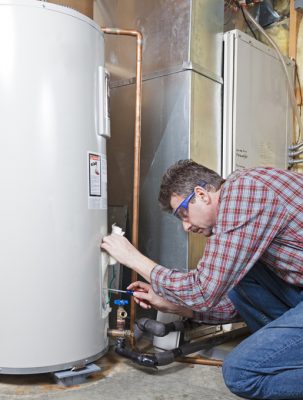Effective Methods to Care for Your Home's Hot Water System SuccessfullyBest Practices for Maintaining Your Home's Hot Water System
Effective Methods to Care for Your Home's Hot Water System SuccessfullyBest Practices for Maintaining Your Home's Hot Water System
Blog Article
The article further down on the subject of Tips on Maintaining a Water Heater is incredibly stimulating. Don't miss it.

Warm water is crucial for day-to-day comfort, whether it's for a rejuvenating shower or cleaning dishes. To ensure your warm water system runs successfully and lasts much longer, normal maintenance is essential. This post provides useful ideas and insights on just how to keep your home's hot water system to avoid interruptions and pricey fixings.
Introduction
Maintaining your home's hot water system may seem difficult, however with a few easy steps, you can ensure it runs efficiently for several years ahead. This overview covers everything from comprehending your warm water system to do it yourself upkeep pointers and recognizing when to call in professional help.
Significance of Maintaining Your Warm Water System
Normal upkeep not only prolongs the lifespan of your hot water system yet additionally ensures it operates efficiently. Neglecting maintenance can lead to decreased efficiency, higher energy bills, and also early failing of the system.
Indicators Your Warm Water System Requirements Upkeep
Understanding when your warm water system requires focus can stop significant concerns. Watch out for signs such as inconsistent water temperature level, odd noises from the heater, or corroded water.
Flushing the Hot Water Heater
Purging your hot water heater eliminates sediment buildup, enhancing effectiveness and prolonging its life.
Checking and Changing Anode Rods
Anode rods protect against rust inside the tank. Evaluating and replacing them when worn out is vital.
Complex Issues Requiring Specialist Assistance
Examples include significant leakages, electrical problems, or if your hot water heater is constantly underperforming.
Routine Specialist Maintenance Conveniences
Expert maintenance can consist of thorough examinations, tune-ups, and ensuring conformity with security standards.
Inspecting and Readjusting Temperature Settings
Readjusting the temperature settings makes sure optimal efficiency and safety.
Do It Yourself Tips for Maintenance
You can carry out numerous maintenance jobs yourself to maintain your warm water system in top problem.
Checking for Leakages
Frequently inspect pipelines and connections for leakages, as these can cause water damages and higher expenses.
Recognizing Your Hot Water System
Prior to diving into maintenance jobs, it's helpful to comprehend the fundamental parts of your hot water system. Typically, this consists of the water heater itself, pipelines, anode poles, and temperature controls.
Month-to-month Maintenance Tasks
Normal regular monthly checks can aid catch small issues prior to they escalate.
Checking Pressure Relief Valves
Examining the pressure relief valve ensures it operates appropriately and avoids extreme stress build-up.
Insulating Pipelines
Insulating warm water pipes decreases warmth loss and can save power.
When to Call a Specialist
While DIY upkeep is valuable, some concerns call for professional knowledge.
Final thought
Routine upkeep of your home's warm water system is essential for efficiency, long life, and cost savings. By adhering to these tips and understanding when to look for specialist help, you can guarantee a trustworthy supply of warm water without unforeseen disturbances.
How to Maintain an Instant Hot Water Heater
Before tinkering with your hot water heater, make sure that it’s not powered on. You also have to turn off the main circuit breaker and shut off the main gas line to prevent accidents. Also turn off the water valves connected to your unit to prevent water from flowing into and out of the appliance. 2. When you’re done, you have to detach the purge valves’ caps. These look like the letter “T” and are situated on either side of the water valves. Doing so will release any pressure that has accumulated inside the valves while at the same time avoid hot water from shooting out and burning your skin. 3. When the purge valves’ caps are removed, you have to connect your hosing lines to the valves. Your unit should have come with three hoses but if it didn’t, you can purchase these things from any hardware or home repair shops. You can also get them from retail stores that sell water heating systems. Read the user’s manual and follow it to complete this task properly. When the hosing lines are connected, open the purge port’s valves. 4. You should never use harsh chemical cleaners or solutions when cleaning your unit. Make use of white vinegar instead. It should be undiluted and you’ll probably use about 2 gallons. 5. Now flush your water heater. This task should probably take about 40 minutes. We can’t give you specific directions for this because the procedure is carried out depending on the type, model and brand of your heater. With that being said, refer to the user’s manual. 6. When you’re done draining the unit, you have to turn off the purge port valves again. Remove the hosing lines that you earlier installed on each of the water valves. Put the valve caps (purge port) back in their respective places and be very careful so as not to damage the rubber discs that are found inside these caps. 7. Now that everything’s back in place, check your user’s manual again to find out how to reactivate your water heating system. 8. Once it is working, turn one of your hot water faucets on just to let air pass through the heater’s water supply pipes. Leave the tap on until water flows smoothly out of it. https://www.orrplumbing.com/blog/2014/september/how-to-maintain-an-instant-hot-water-heater/

I came across that page on What Kind of Maintenance Do Water Heaters Need? while doing a search on the search engines. Enjoyed reading our piece of writing? Please quickly share it. Let someone else find it. Kudos for being here. Return soon.
Visit The Following Page Report this page